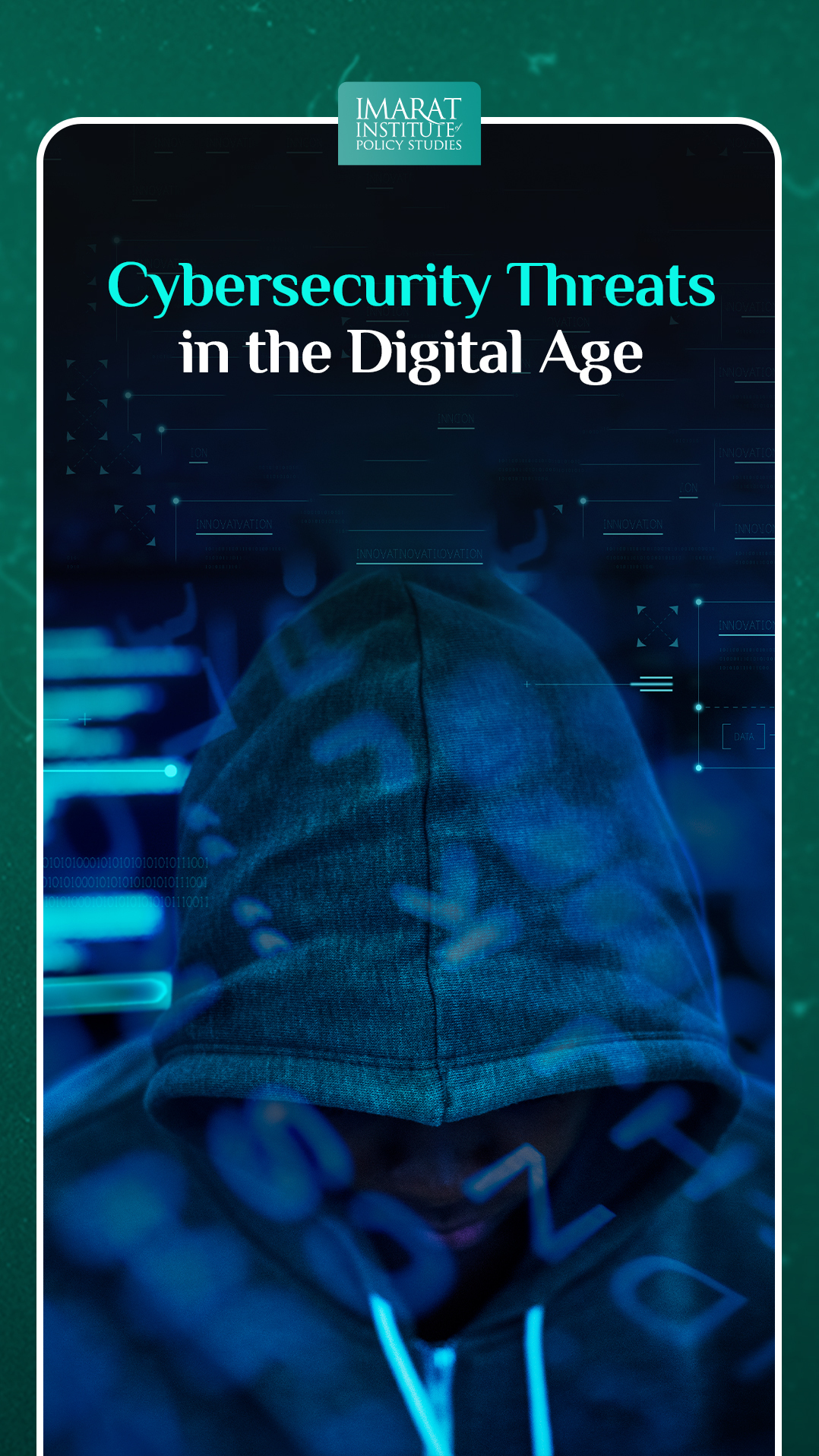The rapid digitization of nearly every facet of our society has swiftly transformed the economic landscape and numerous societal mechanisms. Nonetheless, the risks to our digital systems have undergone significant transformations and have become more pronounced. For instance, in today’s interconnected world, cybersecurity has become increasingly vital. With the rise of digitalization, individuals face various threats to their personal data. From malware attacks to phishing scams and data breaches, the risks are ever-present. Hackers, fraudsters, terrorists, and various cybercriminals perceive our reliance on digital communication as a vulnerability to be exploited. Therefore, governments should develop capabilities, tools, and regulatory frameworks to prepare for the Digital Age and strive towards attaining digital sovereignty to the fullest extent possible. This proactive approach will empower nations to navigate the complexities of the digital landscape with confidence and assert their sovereignty in an increasingly interconnected world.
Common Cybersecurity Threats
Following are some of the common cyber security threats.
Malware Attacks
Malware, short for malicious software, encompasses a range of harmful programs designed to infiltrate and damage computer systems. These include viruses, worms, trojans, and ransomware. Malware can infect devices through various vectors, including email attachments, malicious websites, and infected downloads.
Phishing Scams
Phishing is a type of cyber attack that involves tricking individuals into revealing sensitive information such as passwords, credit card numbers, or personal details. Phishing scams often employ social engineering techniques to deceive victims. Common examples include fake emails posing as legitimate organizations, fraudulent websites mimicking trusted platforms, and SMS phishing (smishing). Vigilance is key in identifying phishing attempts, with red flags including suspicious sender addresses and requests for personal information.
Data Breaches
Data breaches occur when unauthorized individuals gain access to sensitive data stored by organizations. These breaches can have far-reaching consequences, including identity theft, financial loss, and reputational damage. Mitigating the risk of data breaches involves employing security measures such as strong passwords, two-factor authentication (2FA), and data encryption.
Ransomware Attacks
Ransomware has emerged as a particularly insidious form of malware that encrypts the victim’s files or entire systems, rendering them inaccessible until a ransom is paid. This type of cyber attack often targets individuals, businesses, and even government organizations, aiming to extort money in exchange for restoring access to encrypted data. Ransomware can be delivered through various means, including email attachments, malicious links, and compromised websites. The financial and operational repercussions of ransomware attacks can be severe, highlighting the critical importance of robust cybersecurity measures to prevent and mitigate such threats.
Social Engineering Attacks
Social engineering attacks exploit human psychology rather than technical vulnerabilities to gain unauthorized access to systems or sensitive information. These attacks rely on manipulating individuals into divulging confidential information or performing actions that compromise security. Common social engineering tactics include pretexting, where attackers create a fabricated scenario to deceive victims, and baiting, where enticing offers or incentives are used to lure individuals into clicking on malicious links or downloading malware-infected files. Educating users about social engineering tactics and fostering a culture of skepticism and vigilance are essential defenses against these deceptive cyber threats.
Tips for Protecting Personal Data
Some of the tips for protecting personal data are as follows.
Use Strong Passwords
Creating complex and unique passwords is essential for protecting accounts from unauthorized access. Password managers can help generate and store passwords securely, reducing the risk of password-related vulnerabilities.
Enable Two-Factor Authentication (2FA)
2FA adds an extra layer of security by requiring users to provide a second form of verification, such as a code sent to their mobile device, in addition to their password. Enabling 2FA for accounts enhances security and mitigates the risk of unauthorized access.
Keep Software Updated
Regularly updating software is crucial for patching security vulnerabilities and protecting against potential threats. Enabling automatic updates for operating systems and applications ensures that devices remain protected against the latest cyber threats.
Be Cautious of Suspicious Links and Emails
Exercise caution when interacting with emails and links, especially from unknown or untrusted sources. Verify the authenticity of emails and links before clicking, and avoid providing personal information in response to suspicious requests.
Secure Your Wi-Fi Network
Securing Wi-Fi networks helps prevent unauthorized access and protects sensitive data transmitted over the network. Steps such as changing default passwords, using WPA2 encryption, and disabling SSID broadcasts can enhance Wi-Fi security.
Educating Others and Spreading Awareness
Promoting cybersecurity awareness is essential for mitigating risks and protecting personal data. Educating family, friends, and colleagues about cybersecurity best practices and sharing resources can help create a culture of vigilance and resilience against cyber threats.
Conclusion
In an era marked by digitalization and connectivity, safeguarding personal data is paramount. By understanding common cybersecurity threats and implementing proactive measures, individuals can protect themselves against cyber attacks and minimize the risk of data compromise. In light of the increasing importance of cybersecurity in today’s interconnected world, it is imperative that we collectively prioritize this critical aspect of digital safety. By uniting our efforts, we can strive towards establishing a more resilient and secure digital environment, ensuring the protection of individuals and organizations against emerging cyber threats.
This article is written by Haneen Gul. Haneen is a research analyst at the Iqbal Institute of Policy Studies (IIPS).



Leave a Reply